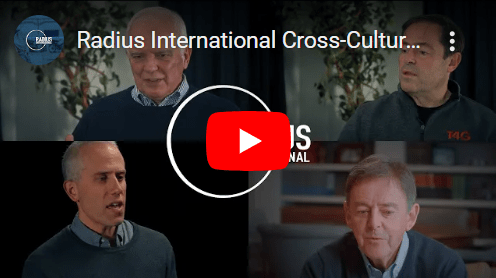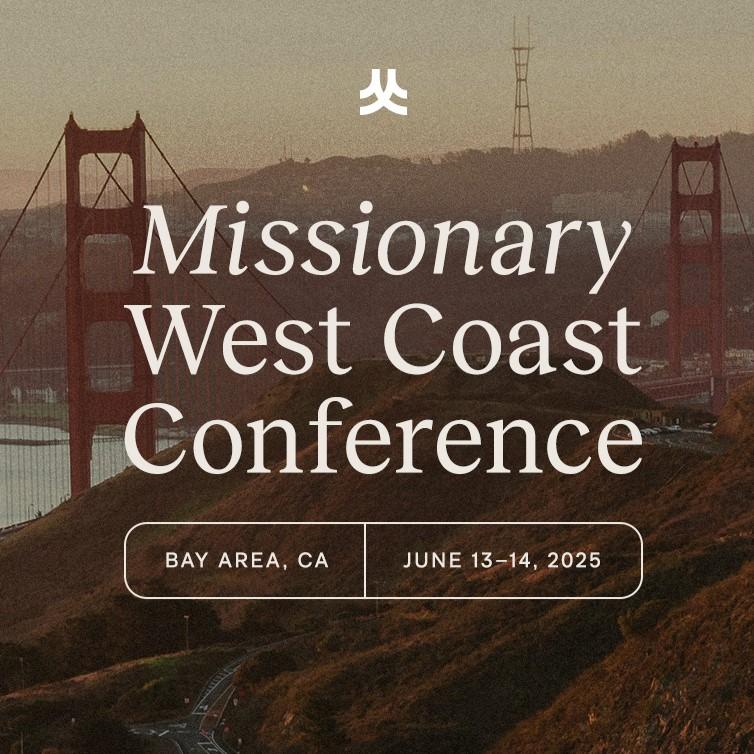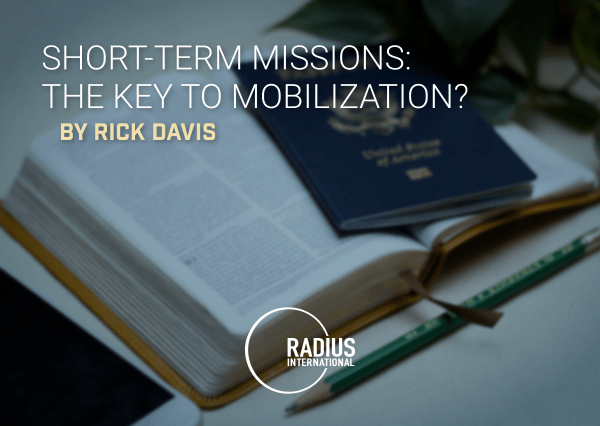For more than a decade now, I have been involved in mobilizing churches to send long-term workers primarily to places where Christ is not known. Most of these churches have already sent multiple short-term missions (STM) teams to different parts of the world. Three main reasons have emerged of why churches promote STM trips in their church: transformation, mobilization, and ministry. All three of these reasons could have volumes written about them. However, I am going to address STM trips as a primary means of mobilization.
During COVID, when most of the world was shut down, I was asked by a missions pastor, “What are some ways we can mobilize our people for missions now that STM trips are not possible?” This question revealed an assumption held by many that the primary means of mobilization is STM trips.
This thinking likely comes from the observation that so many missionaries on the field today had some sort of STM experience that they can point to as the reason they ended up on the field. Thus, the basis of believing that STM is the best way to mobilize long-term missionaries. However, if we turned that observation around and asked, “How many people who went on a STM trip actually ended up on the field?” we may come to a different conclusion.
STM trips have grown exponentially. Some recent stats I read stated that, including domestic trips, over two million people in the U.S. go on a STM trip every year at a cost of around 3.4 billion dollars each year. From 1996 until 2005, STM participation increased by 218% while long-term missionaries increased by 7% (mission:world News).
After looking at these results the conclusion would seem to be that STM trips mobilize more people to go on STM trips but rarely to become long-term missionaries. In fact, more than 4 out of 5 people who go on these STM trips go to places already reached with the gospel and, as a result, about 9 out of 10 who do become missionaries go back to these same places while millions remain without access to the gospel.
So what is the primary means of mobilizing long-term workers to take the gospel where Christ is not known? The primary means of mobilizing long-term workers is understanding the missions basis of the Bible!
The Examples of Jesus and Paul
Jesus wanted to be sure his disciples understood the missions basis of the Bible. He gave his disciples the Great Commission at a mountain in Galilee where he had promised to meet them (Matthew 28), but it was several days after his resurrection. However, He had appeared to them on the first day of his resurrected life. During that occasion, Jesus taught his disciples through the Law of Moses, the Prophets, and the Psalms. He told them everything written about him in the Old Testament must be fulfilled. Then, don’t miss this, “…he opened their minds so they could understand the scriptures.” (Luke 24:44-45) He wanted to be sure they understood what was written.
He then summarized what must be fulfilled by saying,
“Thus it is written, that the Christ should suffer and on the third day rise from the dead, and repentance and forgiveness of sins should be proclaimed in his name to all nations, beginning from Jerusalem.” (Luke 24:46-49)
The word “AND” shows that the summary of the Old Testament doesn’t end with the death and resurrection of Christ, that’s the gospel, but also includes the proclamation of this gospel to all nations. The mission is bigger than one command. It is rooted in the story of the Old Testament and Jesus wanted to be sure his disciples understood the story they were a part of.
Paul certainly understood the story he was a part of. When he wrote his missionary support letter to the church in Rome asking them for help in taking the gospel to Spain (Romans 15:23-24), he explained the missions basis of the Bible (Romans 15:8-12). He stated that Jesus came because of the promises made to the patriarchs (Genesis 12:1-3, 26:4, 28:14). Paul then declared that those promises were made so that “the nations would glorify God for his mercy.” To show the missions basis of the Bible that flows out of these promises, he then declared “as it is written” and he quoted verses from the Law of Moses, the Prophets, and the Psalms.
Paul goes on to call his missionary work of proclaiming the gospel to the nations a “priestly service” (Romans 15:14-16). The role of a priest was to present God to the people through teaching the law and bring the people to God through offering an acceptable sacrifice.
Using this term “priestly service” refers back to what God said on Mt. Sanai three months after Israel left Egypt. God told Israel if they were obedient, they would be a “kingdom of priests and a holy nation” (Exodus 19:5-6). As the people of God, Israel would have the responsibility of making God known to the nations and bringing the nations to the means of atonement with God.
Paul saw his identity and purpose as a child of Abraham was to act as a “priest” responsible for bringing God to the nations through preaching the gospel and bringing the nations to God as worshippers. Peter made this identity and purpose clear for all believers when he wrote that we are a “royal priesthood, a holy nation” that we may declare the praises of God (1 Peter 2:9).
Also, in his letter to the Romans, Paul gave his justification for his ambition for wanting to pioneer a new work in Spain where Christ was not known. Paul could have given many reasons from his personal testimony to explain this ambition, but he didn’t do that. Instead, Paul referred back to the Old Testament saying, “Rather, as it is written” and then, quoting from Isaiah, he referred to Old Testament prophecies of nations who have never heard of coming to faith (Romans 15:20-21).
Mobilization in the Local Church
Whether you are a mobilizer, Sunday School teacher, or pastor, teaching the missions basis of the Bible compels missionary activity. In his book, Missions How the Local Church Goes Global, Andy Johnson wrote:
“Leadership in missions begins not with the pastor’s own passion for missions— that’s great but insufficient. It begins with the pastor regularly preaching through the whole corpus of scripture, opening the implications of the gospel Sunday after Sunday. God is a missionary God. He has a passion for the nations and scripture is full of that passion… congregations whose shepherds regularly preach this rich biblical message will begin to have their worldviews shaped by it. They will learn that the gospel is about more than merely growing “their” church. It’s about more than their own culture or country. The gospel is for all people everywhere. Understanding both the urgency of the task – “How
will they hear unless someone is sent?” – and the greatness and worthiness of God will fuel a passion that touches the whole congregation. Preaching like this is in fact the most foundational thing a pastor can do to lead his congregation in missions.”
To mobilize long-term workers, we don’t need to spend billions on STM trips that may or may not be helpful. We do need to regularly put every passage taught into the context of the biblical story. When we do this, we will unveil the bigger story of God’s plan to gather worshipers from all nations. Understanding this story we are all a part of will compel many to go!

Rick Davis
President of Engage Global
Rick and Nicky have spent over 30 years in pastoral, church planting, and mission mobilization ministry. They planted and pastored churches among Southeast Asian refugees in the U.S before joining a team that planted a church among an unreached people group in Southeast Asia. In 2012, they founded Engage Global with a passion to mobilize and help churches bring unreached people groups into the Kingdom.
 We train individuals, couples, and families who are committed to long-term, pioneer church planting among unreached language groups. RADIUS students acquire spiritual, relational, emotional, and moral maturity as well as the physical stamina that will enable them to survive the rigors of cross-cultural work and life.
We train individuals, couples, and families who are committed to long-term, pioneer church planting among unreached language groups. RADIUS students acquire spiritual, relational, emotional, and moral maturity as well as the physical stamina that will enable them to survive the rigors of cross-cultural work and life.
 Do you desire to take the Gospel to those who have never heard and see a healthy church established? Apply today for our immersive training program.
Do you desire to take the Gospel to those who have never heard and see a healthy church established? Apply today for our immersive training program. Are you interested in learning first-hand about RADIUS training and whether or not it is a good fit for you or your people? Join us for RADIUS Days to see campus, sit in on classes, and interact with current students, interns, and staff.
Are you interested in learning first-hand about RADIUS training and whether or not it is a good fit for you or your people? Join us for RADIUS Days to see campus, sit in on classes, and interact with current students, interns, and staff. Come to one of our campuses in Mexico for a week-long, intensive program to serve via various campus work projects, learn more about The Great Commission, and get a taste of what our students experience during their year with us.
Come to one of our campuses in Mexico for a week-long, intensive program to serve via various campus work projects, learn more about The Great Commission, and get a taste of what our students experience during their year with us. Our friends at Missionary are hosting a conference for young adults and their leaders on June 13-14th, 2025 at NorthCreek Church in Bay Area, CA.
Our friends at Missionary are hosting a conference for young adults and their leaders on June 13-14th, 2025 at NorthCreek Church in Bay Area, CA. Join us for The Radius Conference on October 17-18th, 2025 at RAK Evangelical Church in Ras AL Khaimah, UAE.
Join us for The Radius Conference on October 17-18th, 2025 at RAK Evangelical Church in Ras AL Khaimah, UAE. Spend 9 months in Mexico and play a vital role in The Great Commission through serving our staff and students while gaining valuable cross-cultural experience and opportunities to grow in your faith.
Spend 9 months in Mexico and play a vital role in The Great Commission through serving our staff and students while gaining valuable cross-cultural experience and opportunities to grow in your faith. Would you like to join us in our efforts to further the spread of the Gospel in still-unreached places? Support the work of RADIUS International by donating online.
Would you like to join us in our efforts to further the spread of the Gospel in still-unreached places? Support the work of RADIUS International by donating online. Are you or your church interested in giving towards a special missions opportunity? Learn more about some of our current projects.
Are you or your church interested in giving towards a special missions opportunity? Learn more about some of our current projects. Partner with some of our current students by paying their tuition/room & board.
Partner with some of our current students by paying their tuition/room & board. Reimburse RADIUS for on-campus lodging and/or meals.
Reimburse RADIUS for on-campus lodging and/or meals. Check out our blog for recent posts from our staff, alumni, and ministry partners.
Check out our blog for recent posts from our staff, alumni, and ministry partners. Purchase recommended books from our online bookstore at 10ofthose.com.
Purchase recommended books from our online bookstore at 10ofthose.com.
 Do you desire to take the Gospel to those who have never heard and see a healthy church established? Do you think RADIUS might be a good fit for you? Apply today!
Do you desire to take the Gospel to those who have never heard and see a healthy church established? Do you think RADIUS might be a good fit for you? Apply today!
 Interested in working with RADIUS? Learn more about open positions.
Interested in working with RADIUS? Learn more about open positions.



